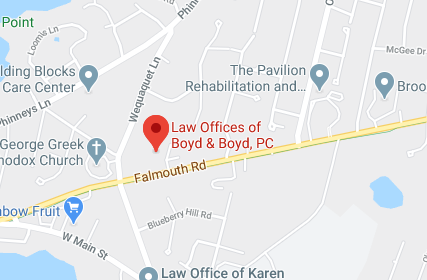The charitable remainder trust (CRT) is easily one of the most versatile estate planning tools. It allows you to support charities you love, provide yourself (or someone else) with regular income, and reduce your tax liability.
Here’s a look at this innovative strategy and how to decide whether it’s right for you.
What Is a Charitable Remainder Trust?
Charitable remainder trusts provide a steady stream of income during your life and transfer assets to a charity of your choice upon your death. Here’s how they work:
You Create the Trust
You’ll start by creating the trust and gifting real estate, stocks, cash, or other assets to the trust. The trust is irrevocable, so you can’t take out assets once you’ve placed them in.
The Trust Generates Income
The trust may hold or sell the assets you gift to it. If the assets are sold there is no capital gains taxes paid by the trust on the assets sold. The proceeds can then be reinvested. Each year, the trust will pay an annuity to you or another chosen beneficiary. This will continue for a term of 20 years or until the death of the last beneficiary (depending on how you set up the trust).
The Assets Transfer to an Approved Charity
After your death (or after 20 years if you chose a 20-year term), the remaining assets in the trust will go to one or more approved charities. The value of the “remainder” must be at least 10% of the trust’s initial value.
Types of Charitable Remainder Trusts
There are two main types of charitable remainder trusts:
- Charitable remainder annuity trusts (CRATs)
- Charitable remainder unitrusts (CRUTs)
A CRAT is the more straightforward of the two. With this option, you may not continue to make contributions once the trust is formed, and the trust will pay a fixed dollar amount annually.
A CRUT allows you to make ongoing contributions if you wish. Each year, the trust will pay you a certain percentage of the assets.
Understanding Charitable Remainder Trust Taxation
Generally, the payments you receive from your charitable remainder trust will be taxed as income. However, any taxes you owe on annuity payments are likely to be offset by the trust’s key tax benefits, which include the following:
Income Tax Deduction
When you create your charitable remainder trust, you’ll receive an immediate income tax deduction. That deduction is based on the value of the remainder interest that will be passed on to your chosen charity after your death.
Tax-Free Asset Conversions
A charitable remainder trust (CRT) is tax-exempt, meaning you won’t have to pay capital gains tax when transferring assets into the trust, unlike if you had sold them directly. However, when the trust distributes income to beneficiaries, those distributions are typically subject to taxes in a specific order:
- Ordinary income generated by the trust (taxed at regular income tax rates).
- Short-term capital gains.
- Long-term capital gains.
- Accumulated capital gains.
- Once all taxable gains have been distributed, any remaining principal is received tax-free.
To better explain this, let’s use the fgollowing example. Let’s assume the distribution amount from the CRT is $4500. The dividends recieved are $750; the short term capital gains are $500, the current long term gains are $1000 and the accumulated gains (from the sale of an asset that was originally contributed to the Charitable Remainder Trust) are $1500.
In this example, the $4,500 distribution from the Charitable Remainder Trust (CRT) is taxed in a specific order. First, the initial $750 comes from ordinary income in the form of dividends and is taxed at the recipient’s regular income tax rate. Next, $500 is taken from short-term capital gains, which are also taxed at ordinary income tax rates. After that, the next $1,000 is drawn from current-year long-term capital gains and is taxed at the long-term capital gains rate. Once these sources are exhausted, an additional $1,500 comes from accumulated long-term capital gains, also subject to the long-term capital gains tax rate. Finally, with no more taxable gains remaining, the last $750 of the distribution is drawn from the trust’s principal, making it tax-free for the recipient. This structured order of taxation ensures that the most heavily taxed income is distributed first before reaching the tax-free portion.
Charitable Remainder Trusts are often called Capital Gains Avoidance Trusts. But in reality, they defer the gain and the tax – often in a way that reduces the capital gains rate and help to avoid the Affordable Care Act Sur Tax (the Net Investment Income Tax – NIIT) of 3.8%.
Is a Charitable Remainder Trust the Right Option for You?
Estate planning is often complex. That complexity becomes even greater for families and individuals of significant wealth. To protect yourself and your loved ones, you need an estate planning team that’s familiar with the intricacies of building a custom-tailored legacy plan.
Boyd and Boyd proudly serves families in Cape Cod, The Islands, and the greater Southeastern Massachusetts area. If you’re considering a charitable remainder trust, call us at (508) 444-9688 or get in touch online to learn more about what we can do for you.
FAQ
What Is a Charitable Remainder Trust?
A charitable remainder trust is an irrevocable, tax-exempt trust that generates income for you and/or other beneficiaries. After the death of the last beneficiary (or a term of 20 years), the remainder of the trust goes to a charity of your choice.
What Are the Tax Benefits of Charitable Remainder Trusts?
Charitable remainder trusts allow you to take advantage of an immediate, partial charitable deduction. They can also help you avoid capital gains tax.










